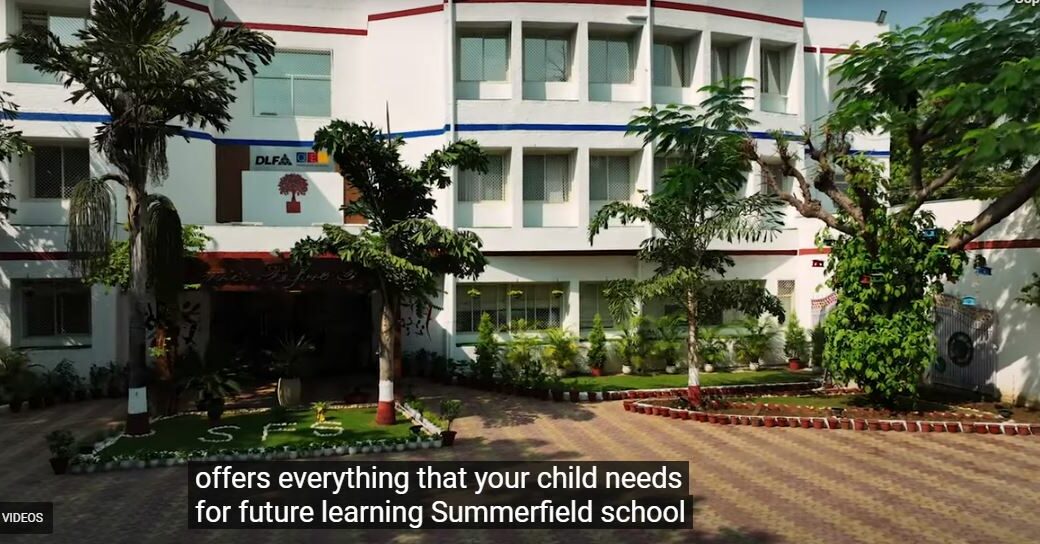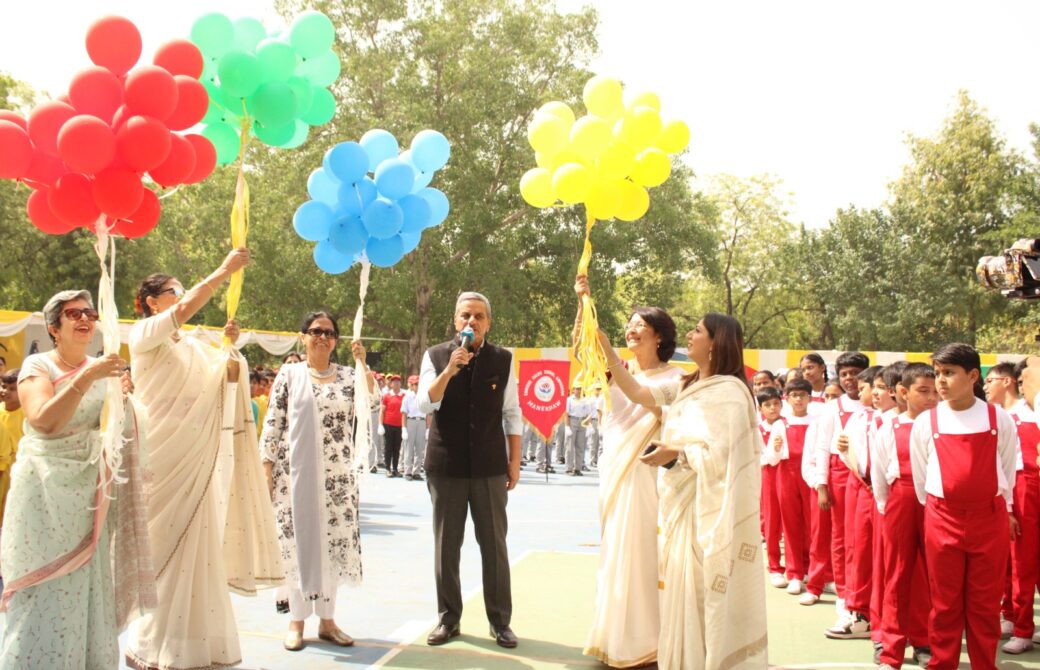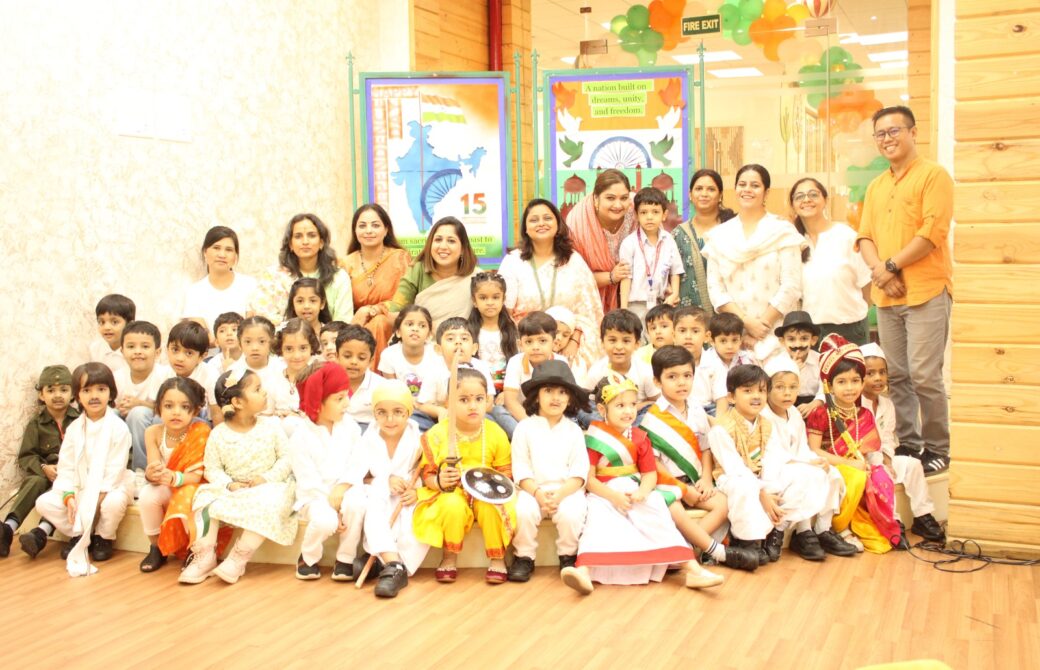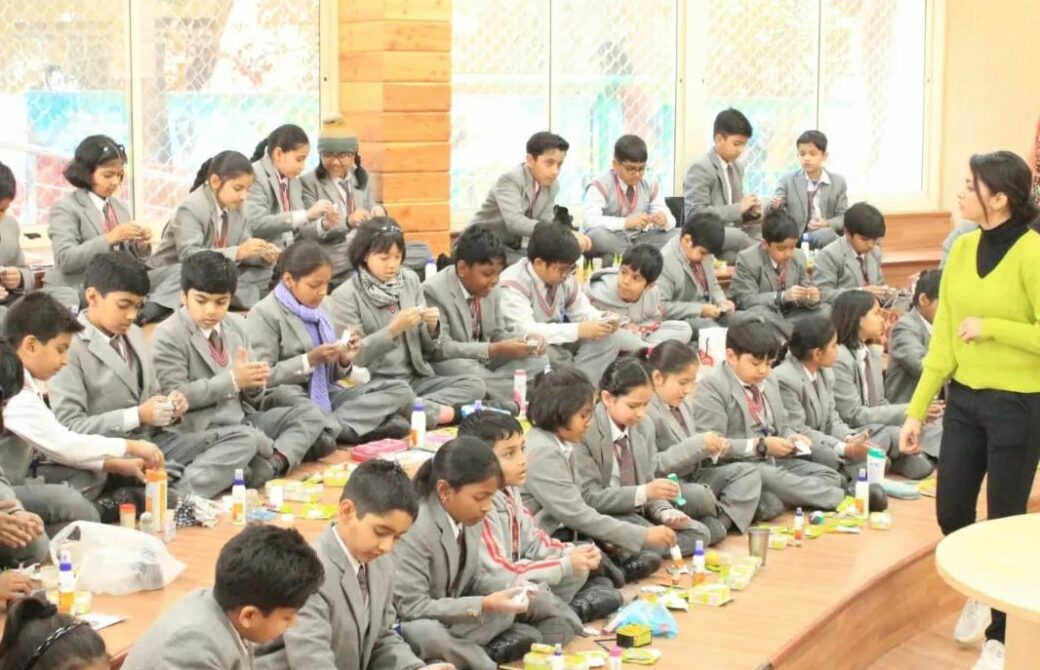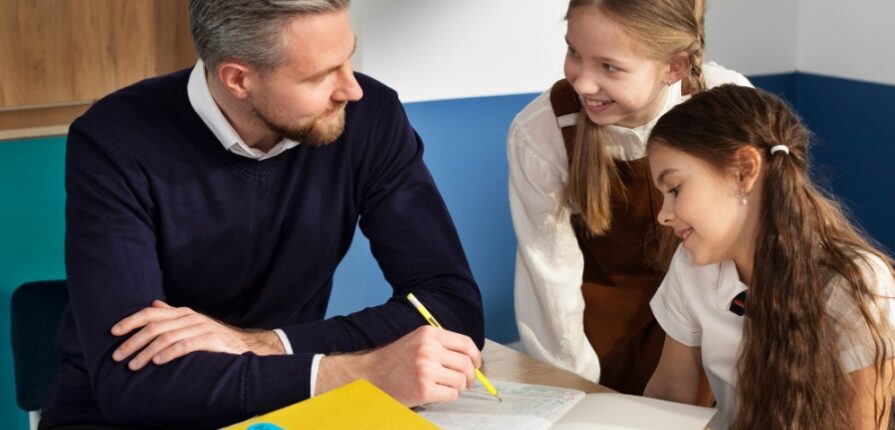Introduction:
Quality education is more than well-equipped classrooms and advanced technology — it’s about meaningful interaction between teachers and students. One of the most defining factors of a successful learning environments is the teacher-student ratio. At Summer Fields School Gurugram, the Top 5 Schools in Gurgaon where it determines how effectively educators can engage, guide, and personalize learning for every child. In today’s educational landscape, CBSE schools understand that smaller classroom sizes and balanced ratios are not just statistics — they are essential indicators of academic success, emotional well-being, and holistic development.
This article explores why teacher-student ratios matter, how they impact different stages of education, what factors to consider when assessing them, and why choosing a school with a healthy balance leads to stronger learning outcomes.
About Us:
At Summer Fields School, we take teacher-student ratio seriously because we know meaningful learning depends on personal attention. Our low student-teacher ratio allows mentors to know each child, their strengths, challenges, and learning styles. In small groups, teachers can deliver quality instruction, give timely feedback, and maintain emotional connect. With specialized sports coaching, extra-help sessions, arts & cultural mentors, and project-based learning, children benefit from focused guidance. Events like parent-teacher meets, workshops, and individualized progress assessments further ensure each student’s educational journey is monitored and nurtured. Our child-centred pedagogy, blended with modern infrastructure and supportive staff, guarantees that classrooms are not just spaces of instruction, but relationships where every student grows confidently and comprehensively.
1. Understanding Teacher-Student Ratio: More Than Just Numbers
The teacher-student ratio refers to the number of teachers available for a specific number of students in a school. For example, a ratio of 1:25 means one teacher for every twenty-five students. While this may seem like a simple metric, its implications run deep.
A low teacher-student ratio means each student receives more attention, personalized feedback, and emotional support. In contrast, a higher ratio may result in teachers being overburdened, limiting their ability to focus on individual learning needs.
The CBSE framework promotes optimal teacher-student ratios across grades, ensuring that educators can maintain quality teaching standards while fostering engagement and inclusivity.
2. Why Teacher-Student Ratio Matters in Learning Outcomes
Research consistently shows that students in smaller class sizes perform better academically and emotionally. Here’s why:
- Individualized Attention: Teachers can identify and address learning gaps early.
- Enhanced Participation: Smaller classes allow students to express ideas confidently.
- Better Classroom Management: Teachers can maintain discipline while ensuring engagement.
- Personalized Feedback: Each learner gets customized input, improving comprehension and retention.
- Emotional Connection: Teachers can nurture a bond that boosts motivation and confidence.
In CBSE school, educators emphasize both intellectual and emotional growth — achievable only when the teacher-student balance allows for personal connection and mentorship.
3. CBSE Guidelines on Ideal Teacher-Student Ratios
The Central Board of Secondary Education (CBSE) has established clear guidelines to ensure quality education standards:
- Primary Classes (I–V): 1 teacher for every 30 students.
- Upper Primary (VI–VIII): 1 teacher for every 35 students.
- Secondary and Senior Secondary (IX–XII): 1 teacher for every 30 students per subject specialization.
Schools that adhere to these norms provide an environment conducive to both academic rigor and emotional safety. When evaluating a school, checking adherence to these benchmarks offers an accurate glimpse into its commitment to educational excellence.
4. Impact on Early Education: Building Foundational Skills
In the formative years, children develop basic literacy, numeracy, and social skills. A balanced teacher-student ratio during this stage ensures that:
- Each child receives adequate attention during reading, writing, and interactive activities.
- Educators can identify developmental milestones and address delays early.
- Personalized teaching styles can be adapted to suit visual, auditory, and kinesthetic learners.
Schools with smaller class sizes enable teachers to lay strong academic and emotional foundations — crucial for lifelong learning success.
5. The Middle School Phase: Nurturing Independence and Curiosity
As students progress into middle school, their curiosity and need for exploration grow. The right teacher-student ratio enables:
- Active discussions and debates in classrooms.
- Continuous monitoring of academic performance and participation.
- Personalized mentoring to manage pre-adolescent emotional changes.
Balanced classrooms encourage healthy competition, better teacher guidance, and opportunities for every learner to participate actively.
6. Senior Classes: Competitive Readiness through Focused Guidance
In higher grades, students prepare for board exams and competitive assessments. At this stage, an optimal ratio ensures:
- Subject-specific clarity: Teachers can devote time to individual queries.
- Mentorship for exams: Students receive customized exam strategies and time management tips.
- Career guidance: Teachers can help align students’ strengths with career paths.
This focused attention can often be the difference between good performance and exceptional achievement.
7. Beyond Academics: Emotional and Social Development
Education today goes beyond textbooks — it’s about developing confidence, empathy, and resilience. When classrooms are balanced, teachers can interact personally, detect behavioral changes, and provide emotional support.
- Students are more likely to share concerns openly.
- Teachers can address peer conflicts promptly.
- Class participation becomes inclusive rather than competitive.
This nurturing environment helps students develop emotional intelligence, teamwork, and leadership — qualities essential in the 21st-century world.
8. How Technology Supports Balanced Teacher-Student Interaction
Digital learning tools now complement traditional teaching, allowing teachers to manage classroom engagement efficiently. Smart boards, AI-based assessments, and online progress trackers help educators personalize instruction even in larger groups.
In CBSE schools, technology acts as a bridge — not a replacement — for personal interaction. It helps:
- Automate grading and attendance, freeing teachers for student mentoring.
- Offer adaptive learning modules that cater to different learning speeds.
- Encourage student-led projects and discussions through interactive platforms.
Balanced use of tech ensures that even if class sizes are slightly larger, learning quality remains high.
9. Key Factors That Influence an Ideal Ratio
While guidelines exist, real-world teacher-student ratios depend on multiple factors, such as:
- Infrastructure: Schools with larger spaces and resources can accommodate smaller groups more comfortably.
- Subject complexity: Technical subjects like Physics or Mathematics may need smaller batches.
- Learning support: Presence of teaching assistants or co-facilitators can maintain quality even with larger classes.
- Pedagogical approach: Schools focusing on experiential learning usually prefer smaller groups for hands-on engagement.
Assessing these aspects gives a clearer picture of how efficiently a school manages its student-teacher dynamics.
10. How Parents Can Evaluate Teacher-Student Ratios
When choosing a school, parents should look beyond promotional materials. Here’s how to make an informed evaluation:
- Ask for data: Schools usually share their average teacher-student ratio upon request.
- Observe a class: Many schools allow classroom visits; observe how teachers interact with students.
- Check student engagement: Are students participating actively or staying silent?
- Speak to current parents: Their feedback often reveals how approachable and available teachers are.
- Review extracurricular support: Ratios matter not just in academics but also in sports, arts, and co-curricular activities.
A transparent school will provide these details confidently — showing its commitment to effective learning environments.
11. Teacher Workload and Professional Well-Being
An overlooked but vital aspect of the teacher-student ratio is educator well-being. When teachers handle too many students, their ability to personalize lessons decreases, and burnout can occur.
Schools maintaining balanced ratios ensure:
- Teachers can prepare lessons thoughtfully.
- Assessments and feedback remain detailed and constructive.
- Educators can invest time in innovation, creativity, and individual guidance.
When teachers feel supported, their enthusiasm and energy directly translate into better classroom experiences.
12. Role of School Leadership in Maintaining Ratios
School leadership plays a central role in sustaining effective teacher-student ratios. Strong management ensures:
- Timely recruitment of qualified faculty.
- Professional development programs to enhance teaching quality.
- Feedback systems that help teachers and students collaborate efficiently.
Such leadership reflects an institution’s long-term vision — prioritizing quality education over quantity.
13. Co-Curricular Activities and Student Engagement
Balanced ratios matter equally in sports, arts, and co-curricular programs. Teachers and coaches can provide individualized instruction, ensuring every student learns teamwork, discipline, and self-expression.
Activities like debates, music, or robotics clubs thrive when mentors can guide smaller groups effectively. Schools that manage this balance demonstrate their commitment to holistic learning — developing both intellect and creativity.
14. The Role of Support Staff and Co-Teachers
To maintain quality even with larger student groups, many schools introduce co-teachers or assistants. Their presence enhances:
- Individual monitoring of student progress.
- Assistance during lab work or projects.
- Timely intervention for struggling learners.
This collaborative approach helps maintain academic quality even as class sizes fluctuate.
15. The Long-Term Impact of Balanced Teacher-Student Ratios
Students who learn in balanced environments exhibit:
- Higher confidence and self-esteem.
- Better academic retention and performance.
- Stronger emotional intelligence and communication skills.
- Greater curiosity and independence in learning.
Such students transition smoothly into higher education and professional spaces, having experienced genuine mentorship and personalized learning.
16. Parental Role in Supporting Balanced Learning
Parents also play a crucial role in ensuring effective teacher-student interaction. They can:
- Maintain communication with teachers to monitor progress.
- Encourage children to participate actively in class.
- Provide constructive feedback to schools about class engagement.
When parents, teachers, and students collaborate, the learning environment becomes more meaningful and productive.
17. How Schools Maintain Ratios as Enrollment Grows
As schools expand, maintaining optimal ratios becomes a challenge. Proactive institutions address this by:
- Recruiting qualified teachers regularly.
- Introducing modular classrooms and subject labs.
- Using hybrid learning to balance workload.
Sustaining personalized attention in growing institutions is a mark of true educational excellence.
18. Measuring the Impact: Indicators of a Good Ratio
Parents can assess the effectiveness of a school’s teacher-student ratio through observable outcomes like:
- Increased student participation.
- Lower dropout rates.
- Higher academic achievement.
- Positive classroom atmosphere.
- Personalized progress reports.
These outcomes reflect how efficiently the school translates ratios into real learning impact.
19. Teacher-Student Relationships: The Core of Learning
At the heart of every strong education system lies the bond between teacher and learner. Balanced ratios nurture mutual respect, trust, and open communication. Students feel seen, heard, and valued — and teachers can truly inspire learning beyond textbooks.
This emotional connection transforms the classroom into a space of curiosity, creativity, and growth.
Conclusion:
A healthy teacher-student ratio is not merely a metric — it’s a reflection of a school’s philosophy towards education. At Summer Fields School Gurugram, the Top 10 Schools in Gurgaon where in an era in which personalized learning and emotional well-being are as vital as academic success, maintaining a balanced classroom size ensures that every child receives equal opportunity to grow and excel.
CBSE schools stand out because they prioritize individual learning experiences, foster mentorship, and create environments where every student feels supported. Choosing such an institution ensures that education remains not just about marks or grades but about understanding, connection, and lifelong growth.
FAQs:
Q1. Why is teacher-student ratio an important factor in education quality?
It determines how much individual attention a student receives, influencing both academic progress and emotional well-being.
Q2. What is the ideal teacher-student ratio in a CBSE school?
Generally, a ratio of 1:30 or lower allows teachers to focus on personalized learning and interactive classroom engagement.
Q3. How can parents assess whether a school maintains a healthy ratio?
Parents can request ratio data, observe classrooms, and talk to teachers or parents to gauge attention levels and teaching quality.
Q4. How does a low teacher-student ratio benefit young learners?
It enhances comprehension, allows early identification of learning gaps, and ensures teachers can cater to different learning styles effectively.
Q5. Can technology help manage larger class sizes?
Yes. Smart tools, online assessments, and learning apps assist teachers in tracking progress, but they work best alongside personal interaction.
Q6. Why do good CBSE schools prioritize balanced teacher-student ratios?
Because they understand that effective teaching requires not just good curriculum but also meaningful time and connection with every student


